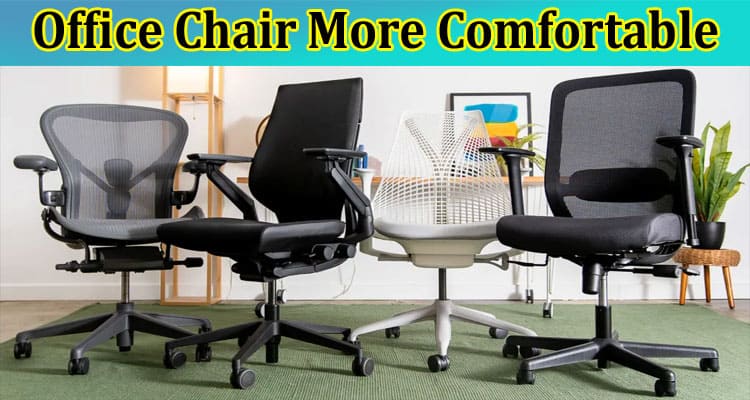If you work in an office, you likely spend a significant portion of your day sitting at a desk. The quality of your office chair can make a significant difference in your overall comfort and health. In this article, we will explore what makes an office chair more comfortable and how you can choose the right chair for your needs.
Adjustable Seat Height
One of the essential factors in a comfortable office chair is adjustable seat height. The chair should be adjustable to suit the height of the user, allowing their feet to be placed flat on the floor. This helps ensure good posture, reducing the risk of back and neck pain. A chair that is too low can cause the user to slouch, while a chair that is too high can cause their feet to dangle, leading to poor circulation.
Most office chairs have a pneumatic lever that adjusts the height of the seat. When seated at banquet tables, your feet should be flat on the floor, and your knees should be level with or slightly lower than your hips. Ensure you can adjust the seat height to the appropriate level for your comfort and health.
Lumbar Support
A comfortable office chair should also have adequate lumbar support. The lumbar region of the spine is the lower back and is prone to strain and tension. A chair with good lumbar support can help prevent back pain and maintain the natural curve of your spine.
The lumbar support of an office chair should be adjustable, allowing you to tailor it to your specific needs. The support should fit snugly against the lower back, filling the gap between the chair and your back. Without proper lumbar support, you may experience discomfort, pain, or even long-term spinal issues.
Adjustable Backrest
A comfortable office chair should also have an adjustable backrest, allowing you to change the angle and tilt of the chair to suit your posture. The backrest should support your spine and promote good posture, keeping your back straight and reducing strain.
The adjustment options for the backrest vary among chairs, with some having a lever that allows you to change the angle, while others allow you to lock the backrest in place. Ideally, the chair should be able to recline slightly to provide support and comfort while sitting for extended periods.
Armrests
If your office chair has armrests, they should be adjustable in height and position. The armrests should support your arms while typing or taking breaks, but they should not interfere with your natural movements or posture. Armrests that are too high can cause shoulder tension, while armrests that are too low can cause wrist and elbow strain.
A good office chair’s armrests should be adjustable to allow you to find the perfect height and position to support your arms comfortably. Ensure that the armrests do not obstruct movement or cause discomfort.
Seat Depth
The seat depth is another critical factor in a comfortable office chair. The seat should be deep enough to support your thighs without putting pressure on the back of your knees. A seat that is too shallow can cause pressure points, leading to discomfort and pain.
When seated, there should be a small gap between the back of your knees and the edge of the chair. The seat depth should be adjustable, allowing you to tailor it to your specific needs. A comfortable seat depth can help prevent discomfort and promote good posture.
Padding
The padding of an office chair can make a significant difference in comfort. A chair with inadequate padding can cause pressure points and discomfort, while a chair with excessive padding can cause heat retention and discomfort.
The ideal office chair should have ample padding on the seat and backrest. The padding should be firm enough to provide support, but soft enough to prevent pressure points. The padding should be made from high-quality materials that retain their shape and do not compress over time.








